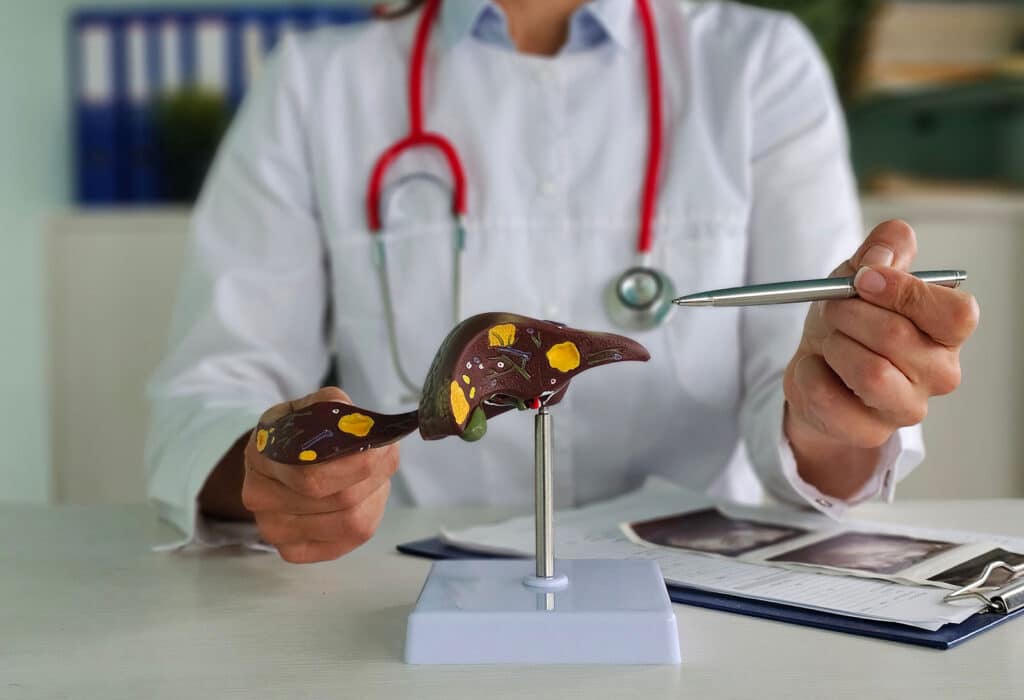Alcohol abuse is on the rise in the U.S. That’s according to the National Institute on Alcohol Abuse and Alcoholism, which revealed that nearly 30 million people aged 12 and older had an alcohol use disorder (AUD) in 2020. Another study published by the same organization found that roughly 21.5% of the U.S. population aged 12 and older frequently engaged in binge drinking in 2021. For reference, that’s around 60 million Americans. If these statistics aren’t troubling enough, alcohol-related deaths are also prevalent in the U.S. Available data shows roughly 97,000 and 43,000 men and women, respectively, die from alcohol-related causes annually. Behind smoking, consuming a poor diet, and leading a sedentary lifestyle, alcohol is the fourth leading preventable cause of death in this country.

Table of Contents
Physical Health Consequences Associated With Alcohol Abuse
Except for alcohol poisoning, alcohol-induced asphyxiation, and losing their lives in an alcohol-related traffic accident, few people suddenly die from consuming too much alcohol. Instead, they develop chronic health conditions brought on by years of drinking that gradually draws the curtains close on their life. When someone engages in binge drinking or has a full-on alcohol use disorder, it increases their chances of developing head and neck, esophageal, breast, and colorectal cancers. But it does not end there; heavy drinking can also give rise to the following chronic health conditions:
- Diabetes
- Gout
- Heart disease
- Pancreatitis
Another chronic health problem linked to heavy drinking is liver damage, an alcohol-related health condition that negatively affects an estimated 4.5 million American adults.
What More People Should Know About the Relationship Between Alcohol Abuse and Liver Damage
Regularly consuming large amounts of alcohol can cause fat to build up in the liver. When this happens, it is considered alcohol-related liver disease (ARLD). To appreciate how dangerous such a condition is, it helps to know a little more about the liver when it comes to the human body. The liver is a cone-shaped organ located in the abdomen, and it plays a critical role in producing bile, a fluid that aids in digesting fat and breaking down food. It also cleans and removes toxins from the blood, including alcohol. Whenever someone consumes alcohol, even in small amounts, it destroys some of the cells in their liver. The liver can create new ones, but over time, excessive alcohol consumption interferes with that process. And when that happens, it leads to ARLD, which comes in stages, the first of which is fatty liver disease.

Stage One: Fatty Liver Disease
Also known as steatosis, fatty liver disease is stage one of ARLD and is characterized by the excessive build-up of fat in the liver. Generally speaking, a healthy liver comprises 5.5% or less fat. Anything over 5.5% constitutes a fatty liver. Most people don’t experience any symptoms during this stage. And it usually resolves itself when they stop drinking for a few weeks or months. However, if they continue to drink excessively, they progress to stage two and eventually stage three of ARLD.
Stage Two: Alcoholic Hepatitis
Unrelated to infectious hepatitis, alcoholic hepatitis is a byproduct of a prolonged alcohol use disorder or binge drinking. When someone develops alcoholic hepatitis, the liver becomes inflamed, triggering several unpleasant symptoms. Some of the more notable of these, according to the Mayo Clinic, include the following:
- Abdominal pain
- Fatigue and weakness
- Fever
- Jaundice
- Loss of appetite
- Malnutrition
- Nausea and vomiting
The longer someone consumes alcohol after developing alcoholic hepatitis, the more damage their liver becomes. The more damaged the liver becomes, the greater the risk of encountering severe health complications. Some of those complications include the development of enlarged veins that restrict blood flow, ascites, kidney failure, and cirrhosis, the final stage of ARLD. For reference, a study published by the National Institutes of Health revealed that 10% to 35% of heavy drinkers have alcoholic hepatitis.
Stage Three: Cirrhosis
The last and final stage of ARLD is the worst, say most gastroenterologists and hepatologists. And it’s not too difficult to see why they share that opinion. In short, cirrhosis refers to severe and irreversible scarring of the liver. If an individual doesn’t seek treatment for cirrhosis and continues to drink, they will develop more and more scars on their liver. Eventually, the liver loses its ability to perform critical, life-sustaining functions, which can prove fatal. Cirrhosis symptoms are similar to alcoholic hepatitis symptoms in that most people with cirrhosis struggle with jaundice, fatigue, and changes in appetite. They also struggle with the following:
- Clubbing of the fingers
- Edema
- Fluid retention in the abdomen
- Itchy skin
- Palmar erythema
- Telangiectasias
- Unintended weight loss
Along with the above, there are cirrhosis symptoms that men and women develop specifically. Some women who have not started menopause may experience changes in their menstrual cycle when they develop cirrhosis. Some men experience low libido, testicular shrinkage, or gynecomastia.

The Four Most Telling Signs of Liver Damage
When someone develops any form of liver damage, the organ’s ability to digest food and remove toxic substances from the body becomes severely compromised.Four of the most telling signs of liver damage caused by excessive alcohol consumption include
Jaundice
Yellowing of the eyes is common among individuals with liver damage, especially those with alcoholic hepatitis or cirrhosis. That yellowing is called jaundice, and it is, arguably, one of the most telling signs of liver damage. Whenever someone develops an infection, the body breaks down red blood cells to help fight off that infection. In the process, it creates a yellowish substance known as bilirubin, which, over time, passes through the liver before finally being expelled from the body. Liver damage impedes this complex process. When bilirubin builds up in the body due to an unhealthy liver, most people develop jaundice, which shows up in their eyes. Since we are on the topic, jaundice can also trigger a yellowing of someone’s skin.
Pain
The more damaged someone’s liver becomes due to excessive alcohol consumption, the more pain they will find themselves in. Most people struggling with alcohol-related liver disease report pain in their upper right abdomen. However, it is not uncommon for people to experience pain in their shoulders, joints, and backside. Depending on how long someone has had ARLD, the pain can be a dull ache or an intense, throbbing pain.
Indigestion
Because the liver plays such a critical role in the digestive process, it stands to reason that a damaged liver would trigger indigestion. When the liver can’t remove toxins from the body, acids in the stomach become blocked. Those blocked stomach acids eventually give way to gastroesophageal reflux disease (GERD), a medical condition that causes contents in the stomach to travel back into the esophagus. Along with regurgitation, GERD also causes bloating, burping, nausea, and laryngitis. It is also not uncommon for some people to experience a dry cough and develop a sour taste in their mouth.
Hyperinsulinemia
Hyperinsulinemia is a clinical term that denotes insulin resistance. Heavy drinking reduces the body’s sensitivity to insulin. Despite being a beverage, alcohol is high in calories. When someone consumes alcohol, those calories get stored in the liver as fat. Too much fat in the liver makes liver cells resistant while simultaneously spiking blood sugar levels. Hyperinsulinemia symptoms are the same as those associated with type 2 diabetes and include the following:
- An inability to focus
- Anxiety
- Difficulty concentrating
- Fatigue
- Frequent feelings of hunger
- Intense sugar cravings
- Weight gain

Conclusion
In summary, the health consequences associated with excessive alcohol consumption are many. There is also something to be said about the toll someone’s drinking can have on their friends, family, and the community they call home. For those unaware, alcohol use disorders and binge drinking are known to contribute to domestic violence, traffic accidents, and sexual and physical assault. Bearing that in mind, if you or someone you love has a problem with alcohol, consider scheduling a consultation with the Illinois Recovery Center, a leading drug and alcohol addiction treatment rehab in Illinois well versed in alcohol addiction recovery.



